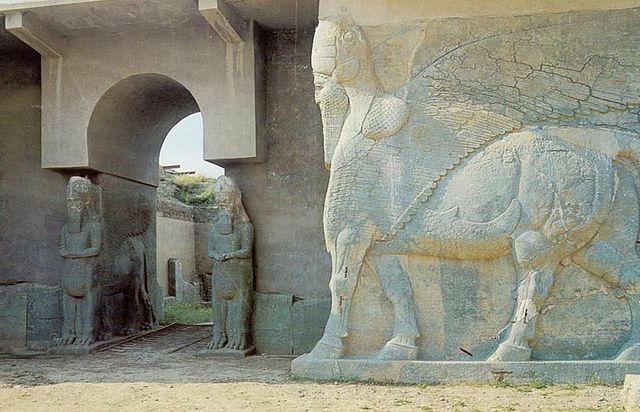Sir Austen Henry Layard was an English Assyriologist, traveller, cuneiformist, art historian, draughtsman, collector, politician and diplomat. He was born to a mostly English family in Paris and largely raised in Italy. He is best known as the excavator of Nimrud and of Nineveh, where he uncovered a large proportion of the Assyrian palace reliefs known, and in 1851 the library of Ashurbanipal. Most of his finds are now in the British Museum. He made a large amount of money from his best-selling accounts of his excavations.
Austen Henry Layard
A. H. Layard at Kuyunjik. Drawing by Solomon Caesar Malan, 1850.
Caricature from Vanity Fair, (Aug 1869) captioned "He combines the love of truth and art with equal devotion and success"
Austen Henry Layard (1883)
Nimrud is an ancient Assyrian city located in Iraq, 30 kilometres (20 mi) south of the city of Mosul, and 5 kilometres (3 mi) south of the village of Selamiyah, in the Nineveh Plains in Upper Mesopotamia. It was a major Assyrian city between approximately 1350 BC and 610 BC. The city is located in a strategic position 10 kilometres (6 mi) north of the point that the river Tigris meets its tributary the Great Zab. The city covered an area of 360 hectares. The ruins of the city were found within one kilometre (1,100 yd) of the modern-day Assyrian village of Noomanea in Nineveh Governorate, Iraq.
A lamassu at the North West Palace of Ashurnasirpal II before destruction in 2015.
1851 sketch of Layard's expedition removing a Lamassu
1849 sketch of Layard's expedition transporting a Lamassu
A stele in situ at Nimrud








